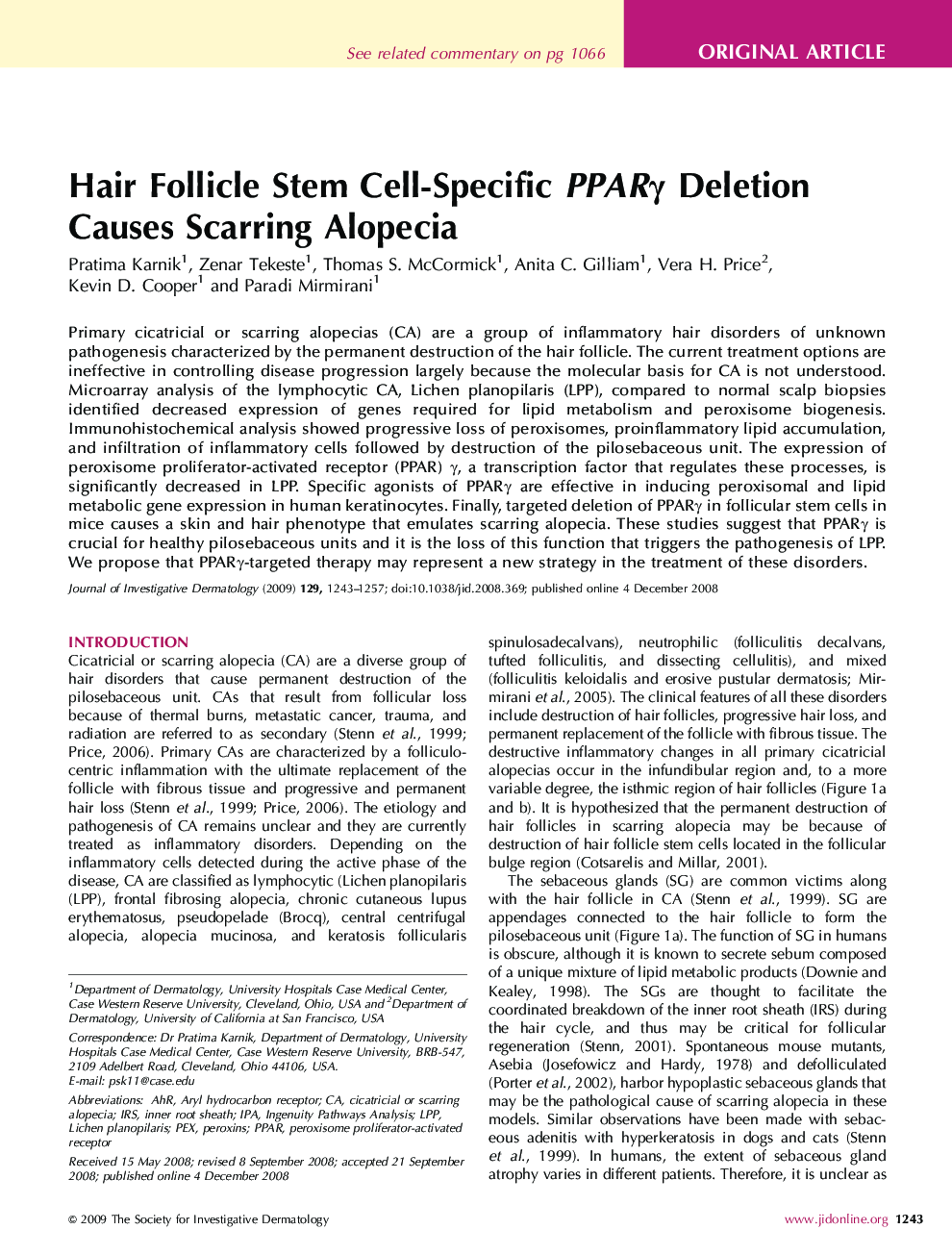| کد مقاله | کد نشریه | سال انتشار | مقاله انگلیسی | نسخه تمام متن |
|---|---|---|---|---|
| 3217051 | 1203590 | 2009 | 15 صفحه PDF | دانلود رایگان |

Primary cicatricial or scarring alopecias (CA) are a group of inflammatory hair disorders of unknown pathogenesis characterized by the permanent destruction of the hair follicle. The current treatment options are ineffective in controlling disease progression largely because the molecular basis for CA is not understood. Microarray analysis of the lymphocytic CA, Lichen planopilaris (LPP), compared to normal scalp biopsies identified decreased expression of genes required for lipid metabolism and peroxisome biogenesis. Immunohistochemical analysis showed progressive loss of peroxisomes, proinflammatory lipid accumulation, and infiltration of inflammatory cells followed by destruction of the pilosebaceous unit. The expression of peroxisome proliferator-activated receptor (PPAR) γ, a transcription factor that regulates these processes, is significantly decreased in LPP. Specific agonists of PPARγ are effective in inducing peroxisomal and lipid metabolic gene expression in human keratinocytes. Finally, targeted deletion of PPARγ in follicular stem cells in mice causes a skin and hair phenotype that emulates scarring alopecia. These studies suggest that PPARγ is crucial for healthy pilosebaceous units and it is the loss of this function that triggers the pathogenesis of LPP. We propose that PPARγ-targeted therapy may represent a new strategy in the treatment of these disorders.
Journal: Journal of Investigative Dermatology - Volume 129, Issue 5, May 2009, Pages 1243–1257